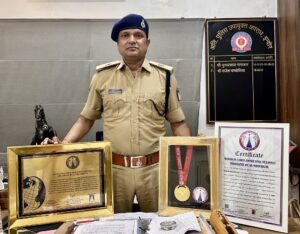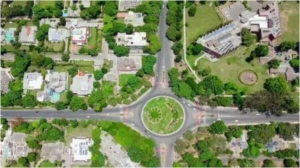Actually, Nirja Bhanot was posthumously awarded the Ashoka Chakra, India’s highest peacetime military decoration, for her bravery in preventing a hijacking in 1986. While she wasn’t the first woman to receive the award (that distinction belongs to Rani Lakshmibai, who was awarded a posthumous Ashoka Chakra in 1956, long before Nirja’s recognition), Nirja Bhanot’s award remains a significant part of India’s modern history due to the nature of her act of courage.
- September 7, 1963, in Chandigarh, India. September 5, 1986, in Karachi, Pakistan.Flight Purser with Pan Am Airways.
- Ashoka Chakra Award: Posthumous recipient, awarded for her bravery during the hijacking of Pan Am flight 73.
- Hijacking Incident: On September 5, 1986, Nirja Bhanot was serving as the flight purser on Pan Am flight 73, which was hijacked by terrorists while it was on the tarmac at Karachi Airport, Pakistan. The hijackers, who were associated with a terrorist group, took control of the flight with 360 passengers onboard.
- Her Bravery: During the hijacking, Nirja displayed extraordinary bravery and composure. She helped passengers escape, including children and elderly people, and also gave crucial information to the authorities. She opened emergency exits and allowed many passengers to flee to safety.
- Protecting Passengers: As the hijackers began to target the crew and passengers, Nirja acted selflessly to protect others. In the course of trying to safeguard the passengers, she was shot by the hijackers. She was only 23 years old when she sacrificed her life.
- Legacy: Nirja Bhanot’s courage in the face of grave danger made her a national hero. Her actions were recognized globally, and she was hailed for saving many lives during the hijacking.
- Awarded Posthumously: Nirja Bhanot was awarded the Ashoka Chakra in 1987, which was presented to her posthumously in recognition of her exceptional courage, leadership, and sacrifice.
- Significance of the Award: The Ashoka Chakra is awarded for acts of bravery in the face of enemy attacks or situations requiring supreme courage, and Nirja’s actions fit the criteria perfectly.
- First Woman: Nirja Bhanot was the first woman to receive the Ashoka Chakra, and her recognition brought to light the importance of bravery and selflessness, regardless of gender. Her act of valor during the hijacking continues to inspire countless people across the world.
- Tamgha-e-Insaaniyat: She was also awarded the Tamgha-e-Insaaniyat by the Government of Pakistan for her bravery and sacrifice during the hijacking.
- Honorary Awards: Various organizations and bodies worldwide have honored her posthumously for her heroism, including receiving numerous national awards and accolades.
- Inspiration: Nirja Bhanot’s bravery continues to inspire people, especially women, to stand up in moments of extreme danger. Her courage proved that one could make a difference in even the most dangerous situations, acting selflessly for the sake of others.
- Public Awareness: Her story has been highlighted in various books, documentaries, and movies. The 2016 Bollywood film “Neerja”, starring Sonam Kapoor, was based on her life and her heroic actions. The film was a massive success and brought her story to a wide audience, ensuring that her bravery was remembered by future generations.
- Women’s Empowerment: Nirja’s recognition as the first woman to receive the Ashoka Chakra also raised awareness about the incredible potential of women in leadership and crisis management roles. Her act proved that women, too, could show immense strength and courage in life-threatening situations.
Nirja Bhanot’s legacy is a poignant reminder of the incredible courage and sacrifice one can make in the face of danger. As the first woman to receive the Ashoka Chakra, her actions not only saved lives but also became a beacon of bravery for the nation. She remains an iconic figure in India, symbolizing the strength and selflessness of individuals in the face of adversity.







